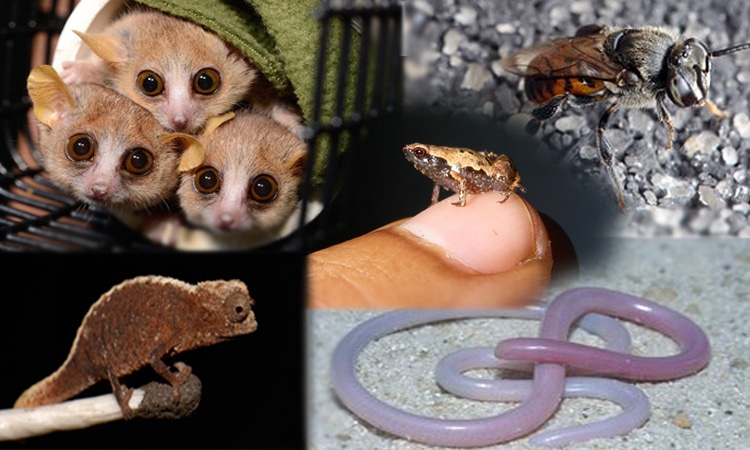MADAGASCAR AND ITS “SMALL FIVE”
Madagascar is located a few hundred kilometers from the great African continent but has not experienced the same evolution in terms of fauna. In Africa, we are proud to have the “Big Five” and why Madagascar could not be entitled to its “Five”. As on the island, there are no large animals except a few carnivores and other reptiles which are no match for the giraffes, elephants and other African attractions.
I then did my little investigation and here are the smallest animals that inhabit the big red island.
the “SMALL FIVE” of Madagascar
Madagascar Frog (Mini mum)
The smallest, (Mini mum), is about the size of a standard paper staple, about 8 to 10 millimeters long; the largest, (Mini ature), measures 14.9 millimeters, or about the length of a microSD card. The smallest known frog in the world – millimeters long – is a housefly-sized frog about 7.7 millimeters long.
A “millimeters long” adult male, one of the smallest frogs in the world, rests on a fingernail and still has room to spare.
Each of the three amphibians only exist in one place in Madagascar. The eastern area of the’ island, between the Pangalanes channel and the mainland. The “Mini mum”, in particular, have an extremely limited range and known population.
The Lesser Madagascar Chameleon (Brookesia micra) is a species of chameleon from the island of Nosy Hara in Antsiranana, in the north of Madagascar. Since February 14, 2012, it is the smallest known chameleon and among the smallest reptiles in the world. In length, the adult Brookesia micra can reach 29 mm.
Pygmy mouse lemur (Microcebus myoxinus)
The smallest true primate is the pygmy lemur, or Peters' lemur, which was discovered in the deciduous forests of western Madagascar. It has a body length of about 62 mm (2.4 inches), a tail length of 136 mm (5.4 inches), and an average weight of 30.6 grams (1.1 ounces).
Madagascar terrestrial bee (Liotrigona bitika)
Madagascar is home to the smallest bee in the world, Liotrigona bitika (Brooks & Michener 1988) with a body length of less than 2 mm, and several other species of Meliponini. They are essentially terrestrial and have their hive underground. They are stingless and love to gather the sweat of animals and men.
Madagascan Lesser Blind Snake (Xenotyphlops grandidieri)
The Indotyphlops braminus, commonly known as the brahminy blind snake[3] and other names, is a species of non-venomous blind snake found mostly in Africa and Asia. Adults are between 2 and 4 inches long. It is the smallest known species of snake.
The latter is not endemic to the island, only that of the northeast.
The critically endangered Madagascar blind snake is a tiny, worm-like snake unlike any other.
The blind Madagascar snake has lost the use of its eyes and uses its bulldozer head to dig in the sandy soil. This bizarre snake is no bigger than an earthworm, and with its translucent pink skin, it looks like one too!
Come and discover them in their original habitat with us.
Madagascar Small Five
06/11/2019
0 comment






Comment (0)